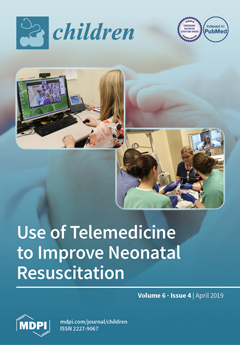The current guidelines recommend the use of 100% O
2 during resuscitation of a neonate requiring chest compressions (CC). Studies comparing 21% and 100% O
2 during CC were conducted in postnatal models and have not shown a difference in incidence or timing
[...] Read more.
The current guidelines recommend the use of 100% O
2 during resuscitation of a neonate requiring chest compressions (CC). Studies comparing 21% and 100% O
2 during CC were conducted in postnatal models and have not shown a difference in incidence or timing of return of spontaneous circulation (ROSC). The objective of this study is to evaluate systemic oxygenation and oxygen delivery to the brain during CC in an ovine model of perinatal asphyxial arrest induced by umbilical cord occlusion. Pulseless cardiac arrest was induced by umbilical cord occlusion in 22 lambs. After 5 min of asystole, lambs were resuscitated with 21% O
2 as per Neonatal Resuscitation Program (NRP) guidelines. At the onset of CC, inspired O
2 was either increased to 100% O
2 (
n = 25) or continued at 21% (
n = 9). Lambs were ventilated for 30 min post ROSC and FiO
2 was gradually titrated to achieve preductal SpO
2 of 85–95%. All lambs achieved ROSC. During CC, PaO
2 was 21.6 ± 1.6 mm Hg with 21% and 23.9 ± 6.8 mm Hg with 100% O
2 (
p = 0.16). Carotid flow was significantly lower during CC (1.2 ± 1.6 mL/kg/min in 21% and 3.2 ± 3.4 mL/kg/min in 100% oxygen) compared to baseline fetal levels (27 ± 9 mL/kg/min). Oxygen delivery to the brain was 0.05 ± 0.06 mL/kg/min in the 21% group and 0.11 ± 0.09 mL/kg/min in the 100% group and was significantly lower than fetal levels (2.1 ± 0.3 mL/kg/min). Immediately after ROSC, lambs ventilated with 100% O
2 had higher PaO
2 and pulmonary flow. It was concluded that carotid blood flow, systemic PaO
2, and oxygen delivery to the brain are very low during chest compressions for cardiac arrest irrespective of 21% or 100% inspired oxygen use during resuscitation.
Full article






